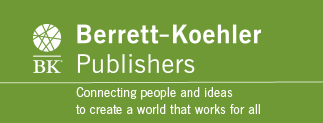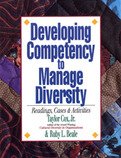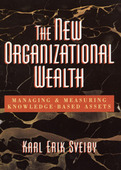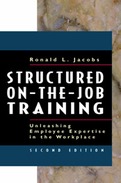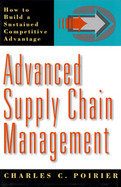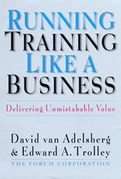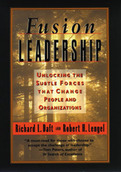Recognizing that "managing" diversity has become a critical skill in organizations all over the world, Developing Competency to Manage Diversity shows how the dynamics of diversity affect people on all levels of society and in all kinds of organizations-from individual relationships to community interactions, from city and national governments to work teams and product markets.
Defining diversity as "a mix of people in one social system who have distinctly different, socially relevant, group identities," this volume responds to the increasing need to function effectively in workplace contexts that are culturally, socially, economically, and racially diverse. To this end, it provides managers with tools they need to successfully manage a diverse workforce. Chapters provide specific tasks and activities to:
o Increase awareness of coworkers' cultural backgrounds
o Create a "pro-diversity" organizational climate
o Develop an operational definition of diversity
o Explore how group identity applies to each group member
o Investigate differences of cognitive style
o Customize team-building strategies for diverse groups
Organized in an easy-to-follow, step-by-step format, a set of twenty-three readings, six case studies, and thirty-one activities takes readers through a three-stage learning process. The first stage creates awareness of a diversity-related issue, the second stage develops knowledge and understanding of effective ways to handle that issue, and the final stage outlines practical actions to respond to the issue. The high costs of failing to recognize and manage diversity-absenteeism, dissatisfaction, barriers to contribution, harassment, discrimination suits, reduced efficiency, and lack of communication-as well as the potential to leverage diversity as an organizational resource-should motivate organizations and groups to make full use of Developing Competency to Manage Diversity.
- Provides a comprehensive picture of participation as the system of governance we need to meet the workplace challenges of today, and tomorrow
- Describes what executives, managers, workers, labor unions, customers, and suppliers can do as part of a participative enterprise
- Argues that participative governance is a major issue of our times, affecting all areas of our lives: education, business, government, families, and community organizations
Shares in Microsoft, the world's largest computer software firm, changed hands at an average price of $70 during 1995, at a time when their "book value" or "equity" was just $7. In other words, for every $1 of tangible value, the market saw $9 of additional value, for which there was no corresponding record in Microsoft's balance sheet. This extra $9 in the value of Microsoft shares represents a major trend. More and more, companies are deriving value from their intangible assets. These assets include their employee's creative ideas, their customers' loyalty, their ability to attract and keep prestigious accounts, their innovative products and services, their popular brand names, and their reputation.
Knowledge-based organizations with intangible assets, such as accounting and legal firms, management consultants, advertising agencies, medical clinics and hospitals, software and engineering companies, and the art and entertainment industry make up the fastest growing business sector. Yet few of these companies achieve their potential performance and profitability because they do not know how to exploit their intangible assets. They measure performance only in terms of money, ignoring less tangible but vital assets such as the ability to capture high profile customers or the creativity to keep the company on the cutting edge with innovative products or services.
The New Organizational Wealth shows how some of the fastest-growing, most profitable companies are discovering that potentially limitless revenues can flow from their firm's intangible assets-the ability of employees, customers, and even suppliers to create new concepts, models, products, and services. Among the book's many examples is Netscape Communications. This successful company demonstrates the profitable results of fostering long-term customer relationships and the effectiveness of investing in employee competence to maintain a rich pool of talent.
The New Organizational Wealth outlines the conceptual framework for changing business strategies to focus on intangible assets. Using its guidelines, managers can learn how to identify the indicators for their company's intangible assets-their employee's talents and strengths, their customers' support and interest, and their supplier's reliability and ingenuity. Specific chapters detail how to effectively use and measure these "tacit" assets, as well as how to monitor them for financial success. Helpful case studies of Scandanavian companies such as WM-data-s, Skandia AFS, and Celemi, which have developed systems for measuring intangible assets and publicly reporting the results, provide models managers can use in leading their companies to increased profitability and long-term organizational success.
- The first book on managing and measuring intangible assets
- Shows how to tap customer and employee knowledge to build a more successful organization
- Provides tools for measuring such intangible assets as competent and creative employees, patents, brand names, or company reputation
- Written by an experienced manager who played a key role in developing the "Scandinavian Movement" of management
This revised and expanded edition of a classic text provides a comprehensive guide to understanding, developing, and using structured on-the-job training in a variety of training situations and organizational contexts. Jacobs defines S-OJT and provides a rationale based on the need to develop high levels of employee competence, or expertise, in the workplace. He then describes a six-step process used to design and implement S-OJT programs. The emphasis here is how S-OJT can be used for managerial training, technical training, and awareness training. The chapters in the final section describe how S-OJT has been used to achieve organizational and societal goals. Included in this section are discussions regarding S-OJT as an organizational change strategy, quality management, cross-cultural aspects, and workforce development.
Supply chain management-the means by which firms engaged in creating, distributing, and selling products can join forces to establish a supply network with an unbeatable competitive advantage-has emerged as one of the most powerful business-improvement tools around. Companies all over the world are pursuing supply chain as the latest methodology to reduce costs, increase customer satisfaction, better utilize assets, and build new revenues. In this fiercely competitive environment, the gap between firms that are succeeding and those that aren't is rapidly expanding. In Advanced Supply Chain Management, leading expert Charles Poirier presents the four levels of accomplishment that separate the successful firms from the "wannabes." He details these four levels, from the beginning stages to the most advanced techniques and processes. Each level is described in detail so a firm can calibrate itself and determine what work remains to be done to close the gap.
Many firms are stuck in the first stage of supply chain management, marked by a myopic internal focus that may result in great short-term results but often misses the mark in the increasingly important global marketplace. Poirier outlines the process by which aggressive firms graduate through the next three stages, moving from an internal focus to an external one as they partner with suppliers and customers, first to achieve savings, then to build a special advantage within a specific market.
Firms that reach the fourth stage learn how to establish the external alliances necessary to build the essential networks. Poirier provides a model for building this advanced stage, including the construction of value chain constellations that deliver benefits that elude lower-level competitors and the implementation of communications Intranets, Internets, and privileged Extranets. He also includes action studies that illustrate what has worked for companies around the world, what has not, and why.
By demonstrating how successful firms have achieved their high status and describing the process it takes to reach their level, Advanced Supply Chain Management gives readers the means to calibrate their own progress and determine a more proactive and cooperative plan for becoming the first in their industry to attain supply chain excellence.
- The recognized expert on supply chain management describes how a company can construct the value chain constellation necessary to achieve market dominance
- Explains a totally new model that builds supply chain excellence around a "nucleus organization"
- Rich in case studies that illustrate what works, what doesn't, and what the leading companies are doing to succeed
- Addresses training's central challenge-how to meet organizational demands for clear business value
- Provides fresh and powerful strategic perspectives and tools to take training out of the limbo between "doing good" and delivering unmistakable value to the business, through a strategic assessment of training operations
- Draws on the authors' great successes running training like a business at major international corporations, including DuPont, Moore Corporation, and NatWest
- Sets out the steps training organizations must take to transform themselves into operating like a business
2004
Fusion Leadership describes a new way of leading based on "fusion," a coming together of whole individuals to accomplish mutual goals based on shared vision and values. Fusion leaders are those who engage not only the bodies and minds of their employees, but also their hearts and souls. Unlike the traditional, hierarchical "fission" management style used for centuries in business, fusion leadership supports personal growth and ingenuity, qualities that facilitate change.
Building on the New Science assumptions that organizations can act as living systems and evolve with changing conditions, Fusion Leadership shows, in practical terms, how individuals and organizations can grow together. Fusion, the authors reveal, unleashes subtle forces-mindfulness, vision, heart, courage, communication, and integrity-which can fundamentally transform organizations.
Mindfulness, they say, represents independent thinking, personal creativity, and an open mind. Vision encompasses the higher purpose toward which people work. Heart represents caring and compassion-positive feelings that underlie workplace relationships. Communication influences vision, values, and emotions; it also involves listening and discerning. Courage motivates people to take risks. Integrity involves honesty, trust, and service-going beyond self-interest to give something to the organization. Through stories, parables, and probing questions, the book helps readers begin to revive these qualities within themselves. It also shows the value and applications of social technologies based on conversation-including dialogue, future search, and whole-scale change-which leaders can use to create organizational fusion, unleashing new synergies among people and achieving far-reaching results.
- Richard Daft is the author of two leading management textbooks, each of which has sold over 230,000 copies: Organization Theory and Design, 6th Edition and Management. 4th Edition
- Offers a striking new metaphor for managing and leading organizations-based on the principle of fusion (a joining together) rather than fission (a splitting apart or separation)
- Presents practical applications of fusion technologies-doable solutions to real problems-and inspires leadership and change
- Provides a personal, practical bridge to New Science and Systems Theory ideas
